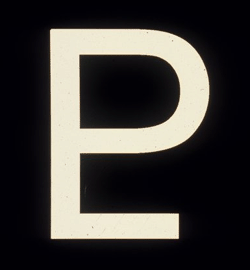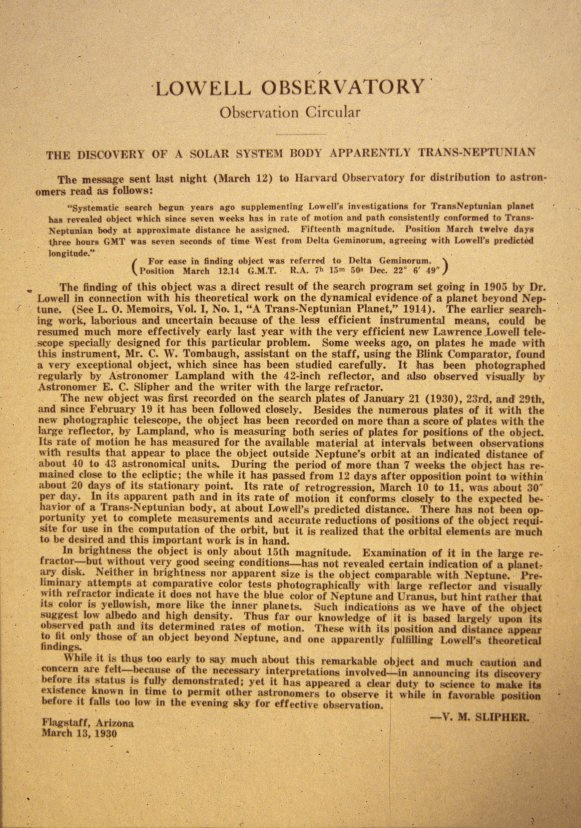Amir Alexander • Feb 16, 2005
The Discovery of a Planet, Part 5: The Aftermath
The discovery of Planet X was announced to the world on March 13, 1930, which marked the anniversary of William Herschel’s discovery of Uranus in 1781 as well as Percival Lowell’s birthday. The observatory’s communiqué emphasized that the discovery was no coincidence, but the vindication of Lowell’s predictions made years before. “Systematic search begun years ago supplementing Lowell’s investigations for Trans-Neptunian Planet has revealed object which . . . consistently conformed to Trans-Neptunian body at approximate distance he assigned” read the announcement. The planet’s position seemed well in agreement with Lowell’s predictions.

The discovery was greeted with enthusiasm by both professional astronomers and the general public. The name “Pluto” was proposed by 11 year old Venetia Burney of Oxford, England, and won out over its rivals “Minerva” and “Cronus.” After a few false starts an accurate orbit was calculated, which showed that Pluto moved in a highly elongated orbit, 17 degrees inclined to the plane of the ecliptic, that took it around the Sun every 248 years. Though not exactly what Lowell had predicted, most astronomers accepted that Pluto was indeed the long sought “Planet X.” Finding the planet so close to the planetary distance predicted by Lowell seemed like too great a coincidence.
Others, however, were skeptical. The main problem was that even the largest telescopes of the day could not resolve Pluto’s image into a disk, as could be done for any other planet. This suggested that Pluto was probably small – far from the Neptune-like gas giant predicted by Lowell, and lacking the mass to produce the perturbations in the orbits of Neptune and Uranus, which were the basis of Lowell’s predictions. Chief among the critics was Ernest W. Brown of Yale, who considered the discovery of Pluto “purely accidental.”
There the issue remained for nearly 50 years. With no way to measure the mass of Pluto, there was no way to estimate whether the planet was massive enough to be considered Lowell’s “Planet X.” But in 1978 James Christy detected a moon orbiting Pluto, which was promptly named "Charon." The period and orbit of a moon provide an unambiguous measurement of the mass of a planet, and so the riddle was solved: Pluto is only 1/455 the mass of the Earth, far too small to significantly affect the orbits of its giant neighbors. Brown, it seems, was right.
Furthermore, we now know that Pluto is not alone, but surrounded by thousands of smaller space rocks orbiting the Sun in that region. Planetary Scientists believe that these are pristine rocks left unchanged from the earliest dawn of the Solar System, and that they have much to tell us about our cosmic origins. Together this debris field is known as the “Kuiper Belt,” and Pluto is viewed by most astronomers today simply as the largest Kuiper Belt object.
Is Pluto truly a planet? Astronomers today are split on that question, and it really comes down to a question of definition. In 2006, the International Astronomical Union (IAU) even voted to strip Pluto of its planetary status, making it the first member of a new class of objects called "dwarf planets." But to millions of its fans around the world there is no doubt. To them, Pluto is unquestionably the 9th planet of the Solar System, discovered through the skill and diligence of an unschooled but enormously talented farm boy from Kansas.

The Time is Now.
As a Planetary Defender, you’re part of our mission to decrease the risk of Earth being hit by an asteroid or comet.
Donate Today

 Explore Worlds
Explore Worlds Find Life
Find Life Defend Earth
Defend Earth

